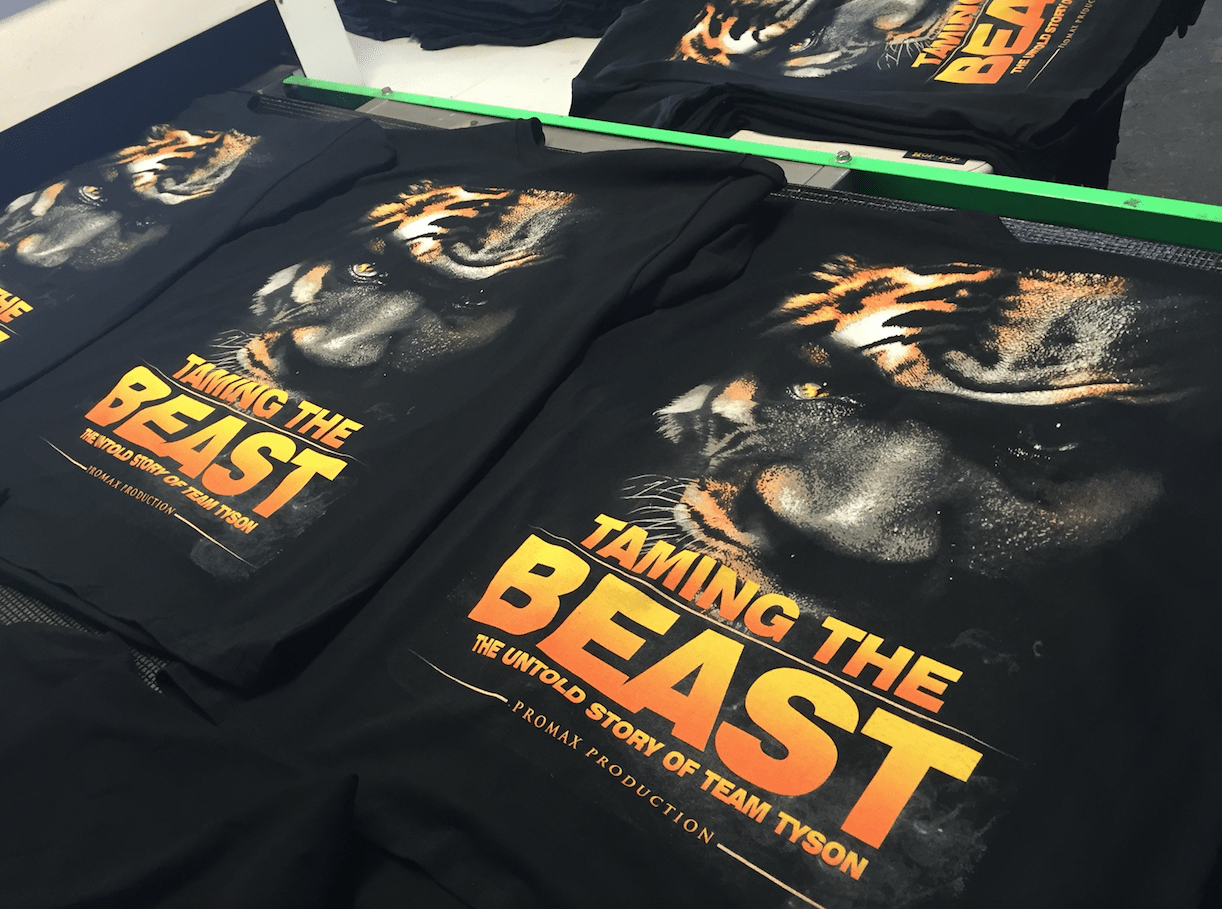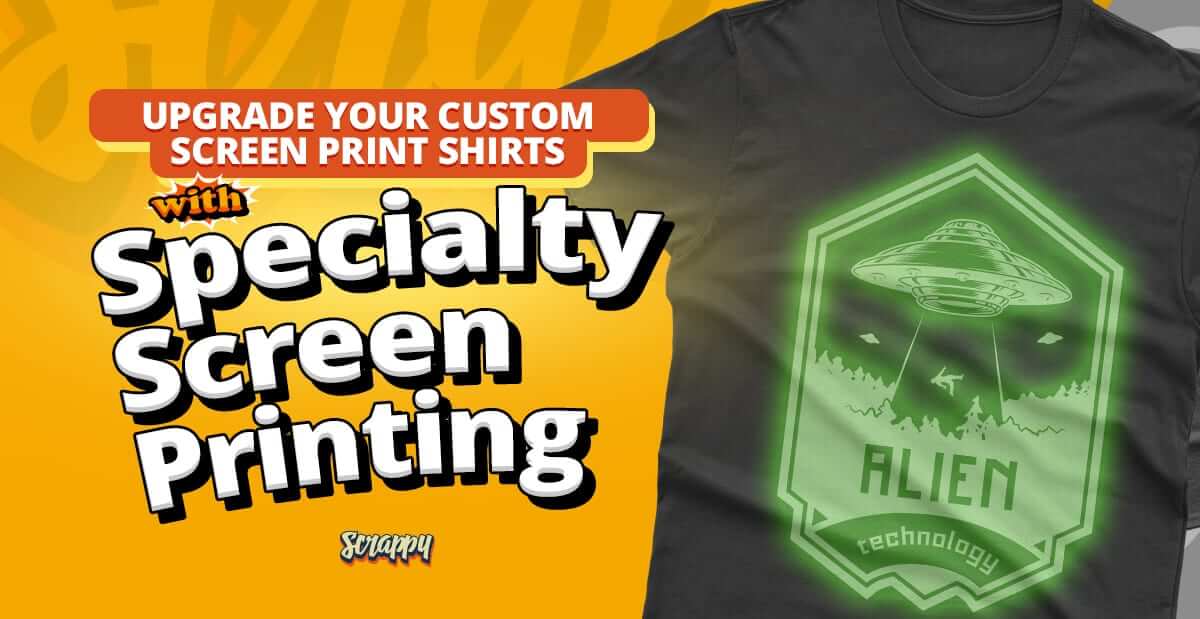Screen Printing Uncovered: Every Little Thing You Required to Find Out About Tee and Garment Printing Techniques
If you've ever questioned how those lively layouts finish up on your favored tees, you remain in the best location. Display printing is a remarkable technique that integrates art with method, using endless possibilities for creativity. Understanding the principles, from equipment to ink choices, can substantially affect your results. Prepared to discover the necessary components that make screen printing an art form? Let's uncover the information that can boost your projects.
The Essentials of Screen Printing: Just How It Functions
When you plunge into screen printing, you'll discover it's both an art and a science. At its core, screen printing entails developing a stencil, or screen, that enables ink to pass through only in specific locations (screen printing kit). You start by selecting your design and preparing your display with a light-sensitive emulsion. As soon as you subject this emulsion to light, it hardens, leaving your layout as an unfavorable space.
Next, you'll blend your inks and prepare your printing surface. Placement the display over the textile, then utilize a squeegee to press ink with the display onto the garment. This process calls for accuracy, as you desire clear, dynamic prints. After printing, you'll treat the ink with warmth, ensuring it follows the material and lasts via laundries. Each step is important, and understanding them will boost your screen printing abilities, transforming straightforward garments into one-of-a-kind, expressive pieces.
Kinds Of Display Printing Techniques
When you realize the basics of display printing, it's time to explore the different methods that can boost your designs. One prominent approach is standard screen printing, where ink is pressed with a stenciled screen. This technique is wonderful for bold, dynamic colors. There's water-based ink printing, which supplies a softer feel and is eco-friendly, but it requires a various approach to healing.
An additional choice is plastisol printing, known for its sturdiness and vivid colors, making it a preferred for many brand names. Experiment with halftone printing to create gradient effects and detailed styles.
Important Tools for Display Printing
To achieve sensational results in screen printing, having the best devices is basic. You'll require a durable screen printing frame, which holds the mesh that transfers your design onto the garment. Next, spend in high-quality squeegees; these are crucial for using ink uniformly throughout the screen.
Selecting the Right Inks and Products
When picking inks and products for display printing, you need to think about the sort of ink that works ideal for your task. Consider textile compatibility to assure your layouts look fantastic and last lengthy. Also, explore eco-friendly ink alternatives to make your printing process a lot more lasting.
Types of Screen Inks
Picking the best screen ink is important for achieving vibrant, resilient prints that satisfy your project's needs. There are a number of types of screen inks to examine. Specialized inks, such as glow-in-the-dark or metallic, can add one-of-a-kind effects to your designs.

Fabric Compatibility Factors To Consider
Comprehending material compatibility is essential for accomplishing high-grade display prints, specifically because various materials respond distinctively to different inks. Constantly evaluate your inks on sample material to guarantee they stick properly and keep color stability. Furthermore, keep in mind that textile weight and texture can affect the final end result, so selecting the right ink and product combo is essential for your task's success.
Eco-Friendly Ink Options
Environmentally friendly inks are ending up being a prominent selection for display printers who want to reduce their environmental effect while preserving top quality. When selecting inks, think about water-based inks, which are less damaging and less complicated to clean up compared to conventional solvents.
Additionally, search for inks made from renewable sources, such as soy or vegetable-based alternatives. By picking the appropriate inks and products, you'll not just develop magnificent layouts however likewise add to a much more sustainable printing procedure. Make the button, and your prints will reflect your commitment to the environment!
Preparing Your Layout for Display Printing

Submit Style Needs
To ensure your design looks vibrant and sharp on textile, you'll need to pay attention to file style needs for screen printing. Begin with vector documents like AI or EPS, as they can be scaled without losing top quality. If you use raster pictures, choose high-resolution data, such as TIFF or PNG, preferably at 300 DPI. Stay clear of using JPEGs, as they can shed clearness when resized. Make certain your layout has a clear background to stop undesirable white sides on your prints. Keep shade settings in mind; CMYK is basic for screen printing, so convert your RGB develops as necessary - screen printing kit. By complying with these guidelines, you'll set your art work up for an effective print.
Shade Splitting Up Methods
Shade separation is an essential action in preparing your style for screen printing, and understanding it can greatly enhance your print quality. You'll require to break your layout into individual colors, as each color needs a different screen throughout printing. This precision not just ensures accurate shade depiction however also simplifies the printing procedure.
Resolution and Dimension
Accomplishing the most effective cause screen printing begins with guaranteeing your style has the appropriate resolution and size. Preferably, your art work should be at the very least 300 DPI (dots per inch) for sharp, clear prints. Your final product could look pixelated and unprofessional. if you make use of lower resolution.
When it pertains to size, consider the dimensions of your print area. Design your artwork to match the final print size, ideally developing it in the actual dimensions you'll be printing. By doing this, you'll avoid any kind of unanticipated scaling problems.
Constantly inspect your layout in both vector and raster styles. Vector graphics can be scaled without shedding top quality, making them optimal for display printing. Preparing properly will guarantee your style looks incredible on every garment!
Step-by-Step Screen Printing Process
Display printing is a dynamic process that allows you to develop vibrant designs on numerous surface areas. To get begun, you'll more tips here need a display, solution, and your selected ink.
After rinsing the unexposed solution, your display prepares. Establish it up on your printing surface and align your garment under it. Put ink onto the display and utilize a squeegee to push the ink through the stencil onto the textile. Raise the display carefully and let the print dry. Heal the ink utilizing heat to assure toughness. That's it! You have actually successfully screen published your layout.
Tips for Successful Display Printing Projects
While you're diving into your display printing tasks, keep in mind that prep work is vital to success. Begin by collecting all your products-- inks, screens, garments, and mops. A tidy workspace aids avoid undesirable errors, so tidy up before you start.
Next, confirm your art work is high-resolution and effectively sized for your garment. Check your display for appropriate direct exposure and clean it extensively to prevent spots. When mixing your inks, adhere to the manufacturer's guidelines to achieve the ideal consistency.
During printing, use also stress with your squeegee for consistent outcomes. Do not rush; take your time to verify each print satisfies your standards. After printing, let your garments completely dry entirely prior to taking care of or packaging them.
Lastly, always maintain an example of your job for future reference. This method, you can analyze your progress and enhance your methods over time. Happy printing!

Frequently Asked Concerns
Just how Long Does It Require To Establish a Screen Printing Task?
Establishing a display printing work generally takes about half an hour to an hour. You'll prepare the displays, mix inks, and change journalism. The moment differs based on intricacy and experience, so stay arranged!
Can I Print on Various Material Enters Using the Very Same Technique?
Yes, you can publish on different textile kinds making use of the exact same technique, however you'll require to change your setups and inks. Some materials absorb ink in a different way, so trying out assurances the finest results for each and every material.
What Prevail Mistakes to Stay Clear Of in Screen Printing?
When screen visit the site printing, prevent usual errors like using the incorrect ink, ignoring proper direct exposure times, or avoiding pre-press checks. Constantly evaluate your setup and preserve clean screens to assure quality outcomes each time.
How Can I Effectively Clean and Maintain My Display Printing Equipment?
To appropriately clean and preserve your screen printing tools, you ought to consistently wash displays with proper solvents, check squeegees for wear, and guarantee all devices are kept dust-free and completely dry. Consistency improves and prevents expensive fixings performance.
Is Display Printing Ecologically Pleasant Compared to Other Techniques?
Screen printing can be a lot more eco friendly than other approaches, especially if you utilize eco-conscious materials and water-based inks. By picking lasting supplies and methods, you reduce waste and reduce your effect on the planet.
Screen Printing Uncovered: Whatever You Required to Know About T-Shirt and Garment Printing Methods
At its core, display printing entails developing a stencil, or display, that allows ink to pass through only in certain locations. Position the display over the textile, then make use of a squeegee to press ink via the screen onto the garment. One preferred approach is standard screen printing, where ink is pressed through a stenciled screen.When choosing inks and materials for display printing, you require to take right into account the kind of ink that functions ideal for your task.